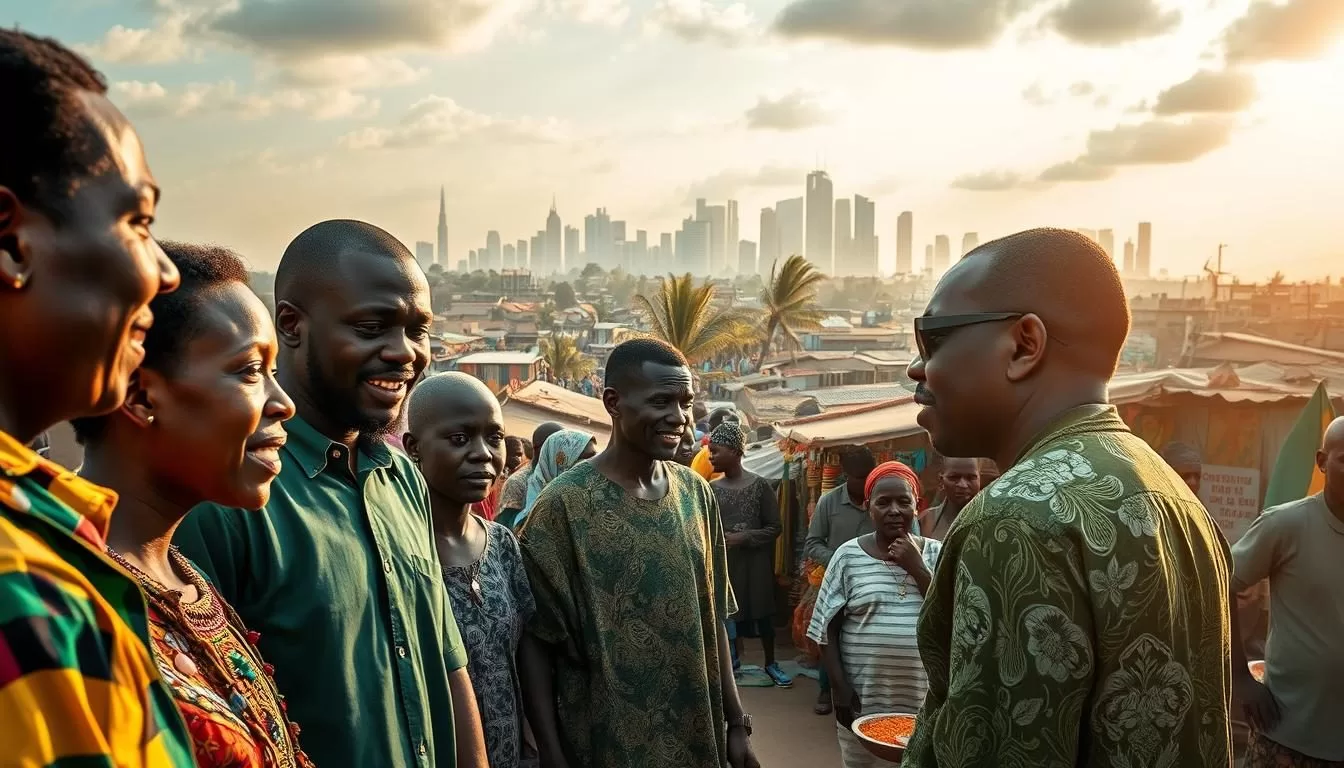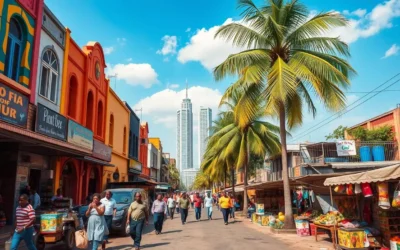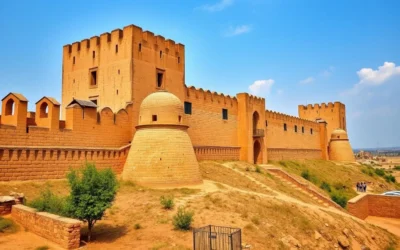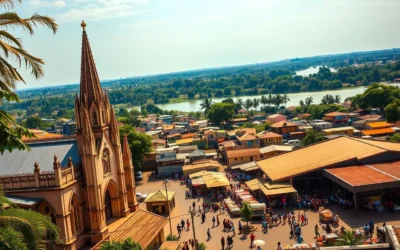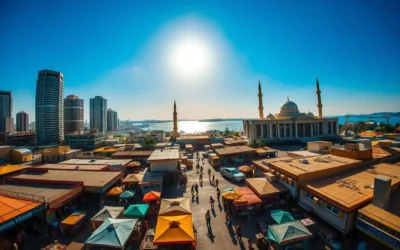Imagine a country where over 520 native languages coexist, each reflecting a unique part of its rich culture. This is Nigeria, a vibrant nation in West Africa known for its incredible linguistic diversity.
English serves as the official language, used in government, education, and business. However, Nigerian Pidgin, a lingua franca based on English, bridges communication gaps for millions.
Languages like Hausa, Igbo, and Yoruba are widely spoken, each with millions of speakers. This complex linguistic landscape reflects Nigeria’s historical roots and multicultural population.
Understanding this diversity offers a glimpse into how language shapes everyday life in this fascinating region.
Overview of Nigeria’s Linguistic Diversity
Step into a land where hundreds of dialects tell stories of ancient traditions. This vibrant region is home to over 520 native tongues, each reflecting a unique part of its cultural heritage. From the bustling cities to the rural villages, language is the thread that weaves communities together.
Historical Roots and Colonial Influence
Long before colonial rule, indigenous groups like the Hausa, Yoruba, and Igbo developed rich linguistic traditions. Hausa, for example, became a lingua franca in the north, while Yoruba and Igbo dominated the south. These languages were more than just tools for communication—they were symbols of identity and pride.
Colonialism introduced English, which eventually became the official language. This shift aimed to unify the diverse population under a common tongue. However, it also sparked the evolution of Nigerian Pidgin, a practical blend of English and local dialects that bridges communication gaps.
Modern Trends and Global Impact
Today, globalization has reshaped the linguistic landscape. Indigenous languages coexist with global tongues, influencing music, media, and education. For instance, Yoruba’s tonal nature adds depth to Afrobeat music, while Igbo’s dialects preserve cultural stories.
Migration and technology have also played a role. People carry their native tongues abroad, fostering multilingual communities. Meanwhile, efforts to document endangered languages ensure they remain part of the cultural fabric.
“Language is the roadmap of a culture. It tells you where its people come from and where they are going.”
From historical roots to modern trends, the linguistic diversity of this region continues to evolve, reflecting its dynamic identity.
Nigeria: Official and widely spoken languages
Language serves as a unifying force in a region rich with cultural heritage. In this vibrant part of West Africa, English holds the status of the official language, used in government, education, and media. It bridges communication gaps among diverse ethnic groups, fostering unity in a land of over 520 native tongues.

English as the Official Language
English plays a central role in formal settings. It is the medium of instruction in schools and the language of national documents. Approximately 79 million people speak English, making this region one of the most populated Anglophone areas globally.
In urban centers, English dominates daily interactions. It is also a key tool for accessing global opportunities, from business to technology. This widespread use reflects its importance in shaping the future of the population.
Nigerian Pidgin and Its Role as a Lingua Franca
Nigerian Pidgin, a blend of English and local dialects, emerged from historical contact. Today, it is a practical tool for everyday communication, spoken by an estimated 30 million people.
This lingua franca thrives in informal settings, from markets to social gatherings. It breaks down barriers, allowing people from different ethnic groups to connect effortlessly. Its influence extends to music, movies, and popular culture, making it a vital part of the region’s identity.
| Language | Speakers (Millions) | Primary Use |
|---|---|---|
| English | 79 | Government, Education |
| Nigerian Pidgin | 30 | Everyday Communication |
| Hausa | 50 | Northern Region |
From formal English to the colloquial Pidgin, language remains a cornerstone of unity. It reflects the dynamic culture and history of this fascinating region, connecting millions across diverse communities.
Exploring Nigeria’s Major Language Families
Discover the intricate web of language families that define this vibrant region. These groups of related tongues offer a window into the cultural and historical roots of its people. Understanding them helps you appreciate the diversity and unity found here.
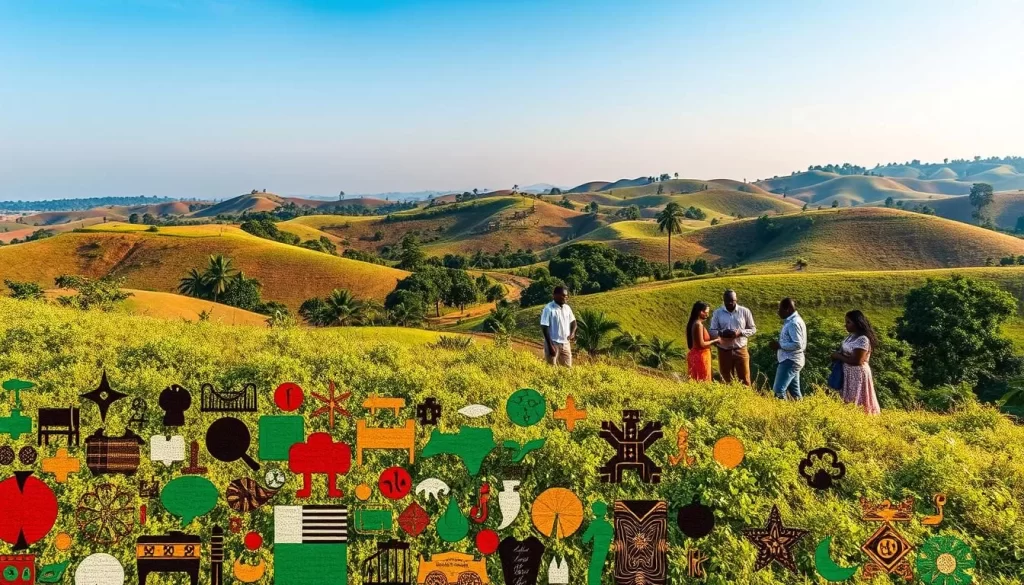
Niger-Congo: Branches and Regional Variations
The Niger-Congo family is the largest, covering a significant part of the area. It includes prominent tongues like Yoruba and Igbo, each with millions of speakers. These dialects are deeply tied to the identity of their communities.
Yoruba, for example, thrives in the southwest, while Igbo dominates the southeast. Both have rich literary traditions and influence local music and arts. This family’s diversity reflects the region’s complex history and cultural evolution.
Afroasiatic and Nilo-Saharan Contributions
In the north, the Afroasiatic family takes center stage. Hausa, its most widely spoken member, connects millions across the region. It’s not just a tool for communication but a symbol of cultural pride.
The Nilo-Saharan group, though smaller, plays a vital role in specific areas. Languages like Kanuri and Fulfulde preserve unique traditions and histories. Together, these families create a linguistic tapestry that enriches daily life.
Modern efforts aim to standardize these dialects while preserving their authenticity. This balance ensures they remain a vibrant part of the region’s identity for generations to come.
Regional Insights into Nigerian Languages
Explore how geography shapes the way people communicate across different areas. In this vibrant part of West Africa, regional differences create distinct linguistic landscapes. From the arid north to the lush south, each area has its own unique dialects and traditions.
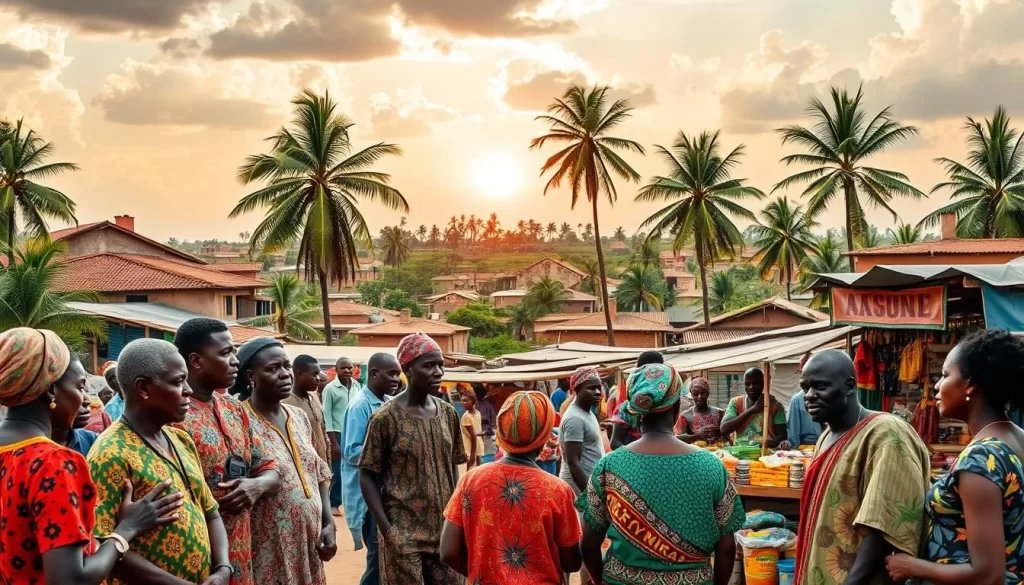
Language Distribution in Northern vs. Southern Nigeria
In the north, Hausa dominates as the primary language, spoken by nearly 63 million people. Its widespread use makes it a lingua franca for many minority groups. This dominance reflects the region’s historical trade routes and cultural exchanges.
In contrast, the south is home to Yoruba and Igbo, spoken by 42 million and 35 million people respectively. These languages thrive in urban centers and rural villages, preserving ancient traditions. Migration patterns have also influenced their spread, creating vibrant multilingual communities.
Factors Shaping Regional Language Trends
Geography and climate play a significant role in language distribution. The north’s arid environment fosters close-knit communities, while the south’s fertile lands encourage diverse interactions. Historical events, such as colonial rule, further shaped these linguistic patterns.
Migration has also been a key factor. People moving from rural to urban areas often adopt new dialects while retaining their native tongues. This blend of old and new creates a dynamic linguistic tapestry.
Cultural Preservation and Modern Challenges
Despite globalization, local languages remain vital for cultural identity. In the north, Hausa continues to symbolize unity, while Yoruba and Igbo preserve traditional stories and arts in the south.
However, challenges like urbanization and the preference for English threaten these dialects. Efforts to document and teach indigenous languages are crucial for their survival.
| Region | Primary Language | Speakers (Millions) |
|---|---|---|
| Northern Nigeria | Hausa | 63 |
| South-West Nigeria | Yoruba | 42 |
| South-East Nigeria | Igbo | 35 |
Understanding these regional differences offers a deeper appreciation for the language diversity in this fascinating part of the world. For more insights, visit this detailed guide on the topic.
The Impact of Globalization and Education on Language Use
Globalization and education are reshaping how people communicate in this diverse region. As the world becomes more connected, traditional dialects face new challenges. Urban environments, in particular, see a shift toward global tongues like English, while indigenous languages struggle to maintain their presence.

Government Policies and Language Standardization
The government has introduced policies to promote national unity through language standardization. For example, the National Policy on Education mandates that primary students study two languages: their mother tongue and a major regional dialect. This approach aims to preserve cultural identity while fostering communication across different groups.
In senior secondary schools, students are required to study one indigenous language and English. This dual focus ensures that younger generations remain connected to their roots while gaining access to global opportunities.
Media, Education, and Cultural Shifts
Modern education and mass media play a significant role in shaping language use. English dominates classrooms, media, and workplaces, often overshadowing native dialects. This trend raises concerns about the future of indigenous tongues, with some at risk of extinction.
Cultural shifts are also evident in the arts. Traditional music and storytelling now blend with global influences, creating hybrid forms of expression. This evolution reflects the dynamic nature of communication in a globalized world.
| Language | Role | Impact |
|---|---|---|
| English | Global Communication | Dominates education and media |
| Indigenous Dialects | Cultural Preservation | Facing decline in urban areas |
| Pidgin | Everyday Communication | Bridges diverse groups |
For more insights on how globalization affects language use, explore this detailed guide. Understanding these changes helps you appreciate the evolving linguistic landscape of this vibrant region.
Cultural Identity and Everyday Language in Nigeria
Every word spoken carries the weight of centuries-old traditions. In this vibrant country, language is more than a tool for communication—it’s a powerful marker of identity. It connects people to their roots, preserving stories, values, and customs passed down through generations.
Language as a Marker of Community and Tradition
Indigenous dialects are deeply woven into the fabric of daily life. They shape how people interact, celebrate, and express themselves. For instance, Yoruba’s tonal nature adds depth to proverbs and storytelling, while Hausa’s poetic structure enhances traditional songs.
Communities take pride in their native tongues, using them to strengthen bonds and pass on wisdom. Public figures and cultural events often champion these dialects, ensuring they remain alive in modern times. This connection to language fosters a sense of belonging and continuity.
Integration of Indigenous Languages in Arts and Media
Local media plays a crucial role in preserving and promoting native dialects. Nollywood films, for example, often feature characters speaking Yoruba, Igbo, or Hausa, reflecting the diversity of the region. This integration reinforces cultural values and makes these dialects accessible to younger generations.
Music is another powerful medium. Afrobeat artists like Burna Boy and Tiwa Savage blend English with indigenous languages, creating a unique sound that resonates globally. This fusion not only entertains but also educates listeners about cultural heritage.
Community initiatives further support this effort. Programs teaching children their mother tongues in schools ensure these dialects thrive. Public campaigns and festivals celebrate linguistic diversity, reminding people of its importance.
“Language is the soul of a culture. It carries the essence of who we are and where we come from.”
From traditional arts to modern media, indigenous languages continue to shape the cultural landscape. They remind us that every word spoken is a bridge to the past and a guide to the future. For more insights into how language defines cultural identity, explore this detailed guide.
Conclusion
Understanding the language diversity of this vibrant region offers a deeper appreciation for its cultural richness. English serves as a unifying tool, while indigenous dialects like Hausa, Yoruba, and Igbo preserve centuries-old traditions. Nigerian Pidgin bridges communication gaps, fostering unity among diverse groups.
Globalization and education continue to shape the linguistic landscape. While English dominates formal settings, efforts to document and teach native tongues ensure their survival. This balance between tradition and modernity reflects the dynamic identity of the country.
Exploring this linguistic tapestry reveals how language connects people to their roots and to the world. For a deeper dive into this fascinating topic, visit this detailed guide.
The above is subject to change.
Check back often to TRAVEL.COM for the latest travel tips and deals.
Here are some Tours & Sightseeing suggestions that might pique your interests!
